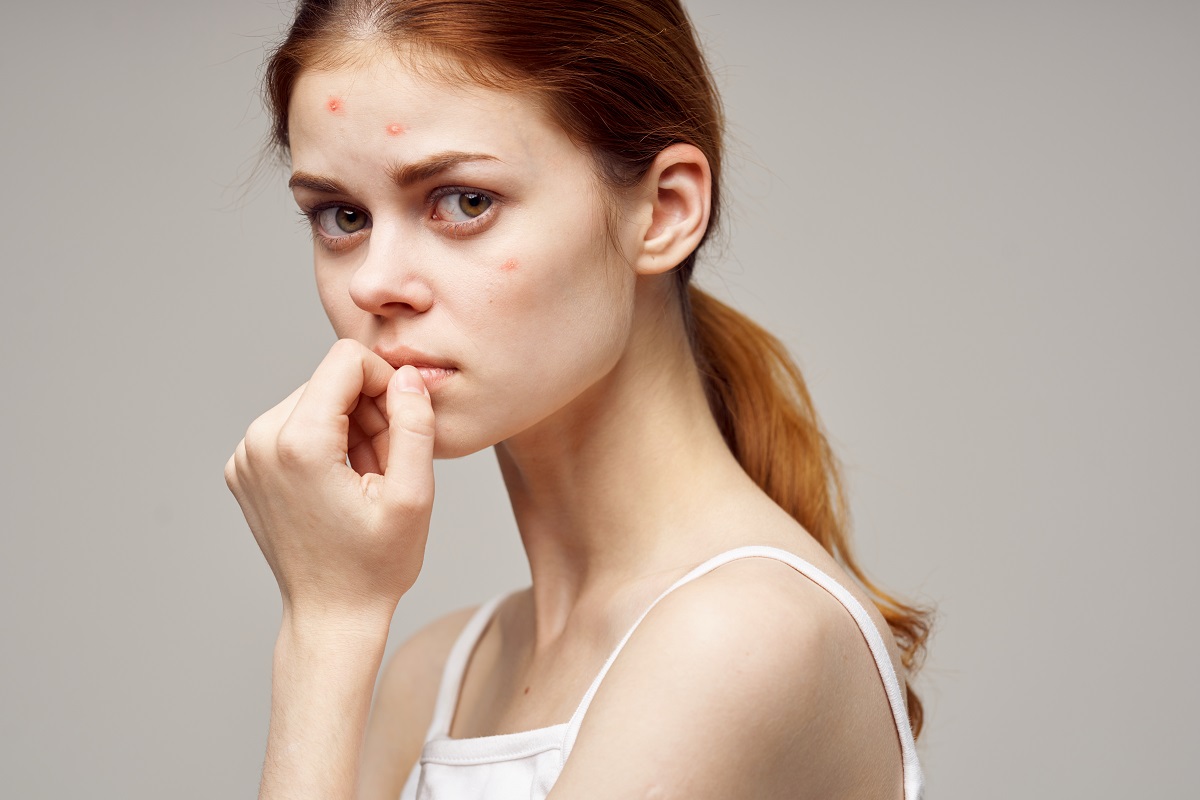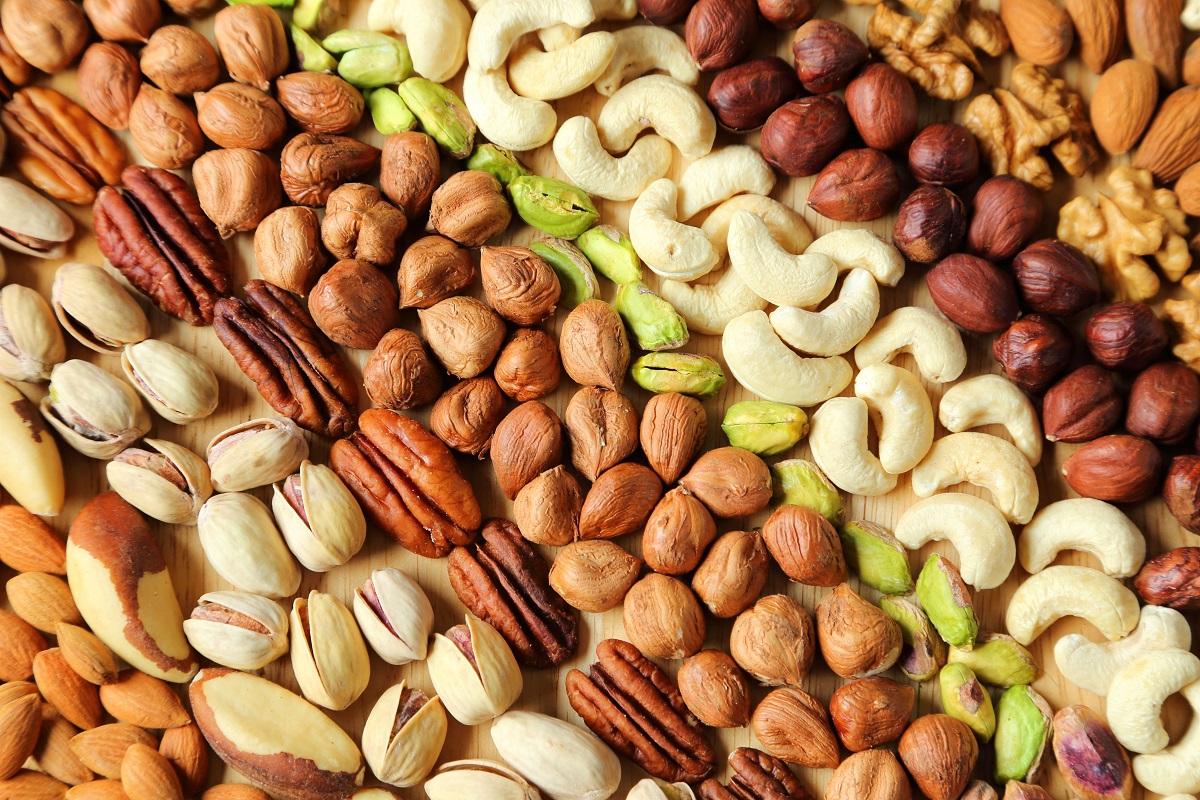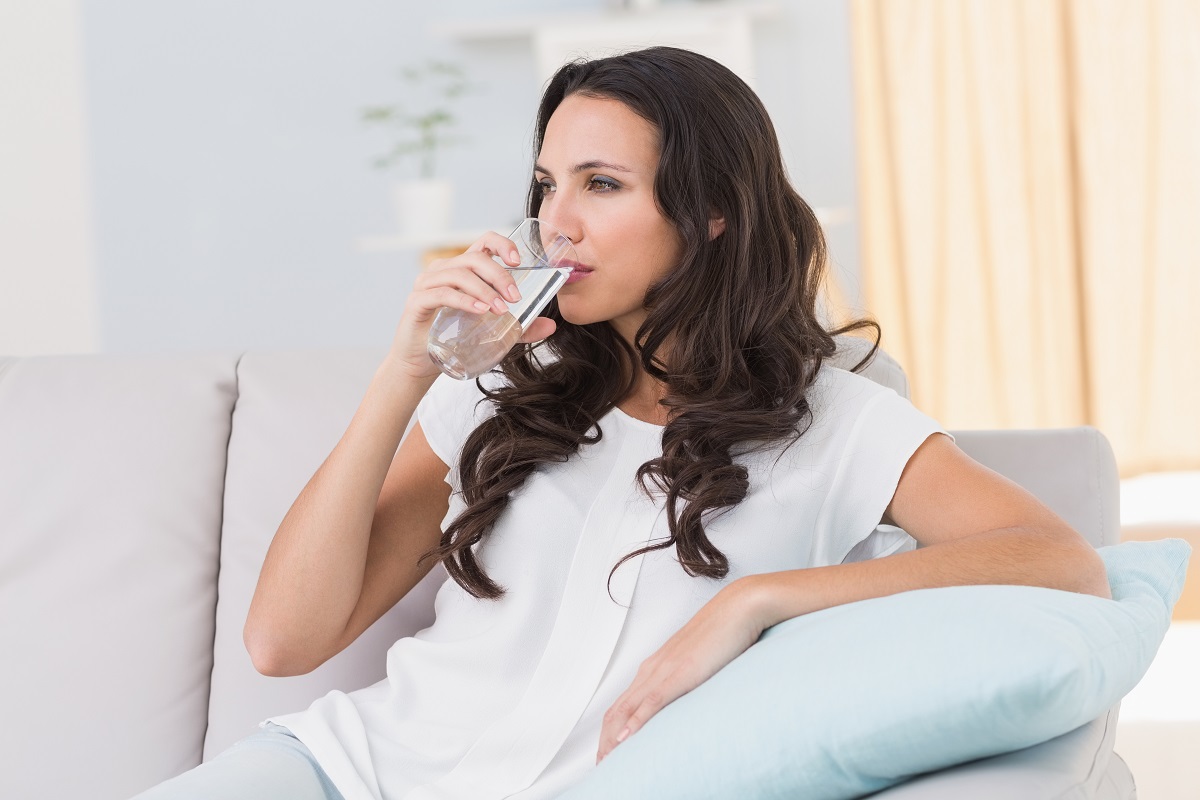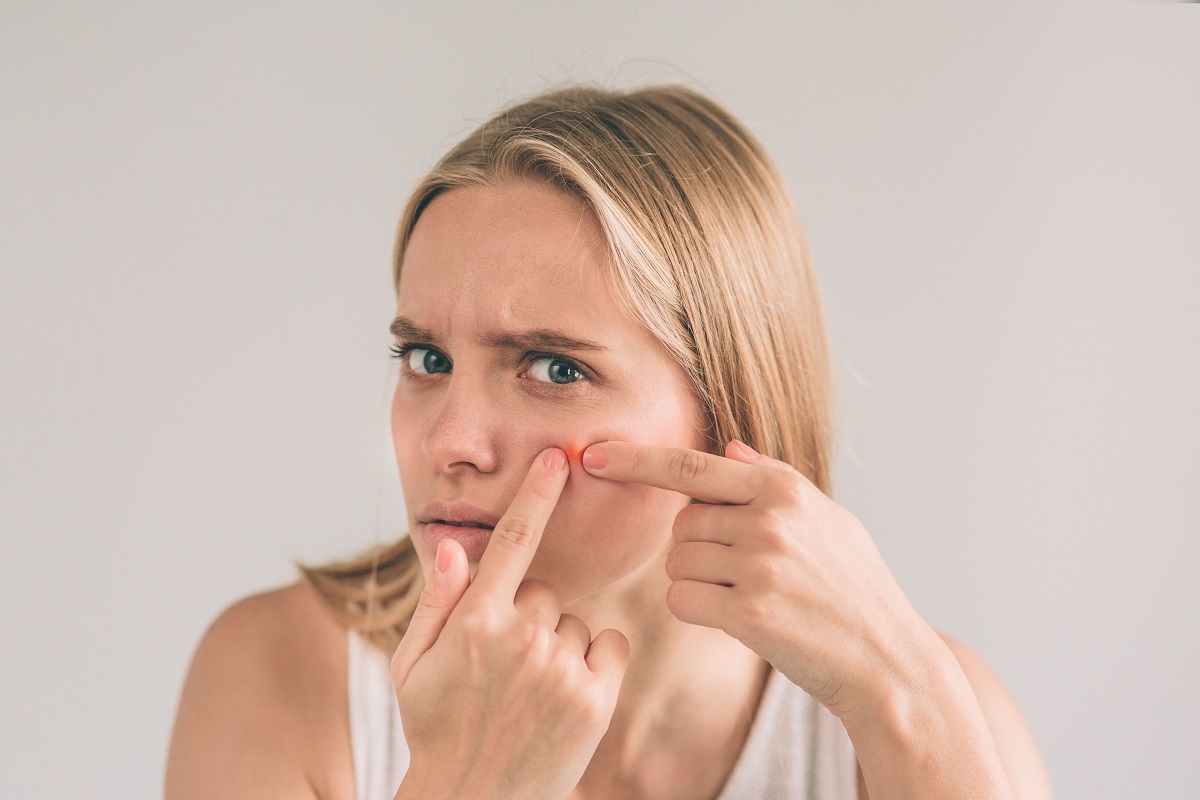Disclaimer: This website provides health information for educational purposes only and is not a substitute for professional medical advice, diagnosis, or treatment. Always seek the guidance of a qualified healthcare provider with any questions you may have.
Navigating the world of skincare can be quite challenging, with the various skin issues one may face. From acne breakouts to mysterious rashes, it’s easy to feel overwhelmed. Complicating matters further is that some skin problems share similar symptoms, making it tough to pinpoint the exact issue.
One common dilemma many face is distinguishing between cold sores and pimples. At first glance, they may seem alike, but understanding the subtle differences is crucial for effective treatment.
Why is it important to take care of your skin?
Taking care of your skin is crucial for several important reasons. Firstly, your skin is the body’s largest organ and serves as a protective barrier against external threats. It shields you from harmful UV radiation, pathogens, and environmental pollutants. Neglecting your skin can weaken this barrier, resulting in various health problems such as infections, allergies, and skin disorders.
Furthermore, proper skincare plays a pivotal role in maintaining your overall well-being. It helps regulate body temperature by facilitating sweat production and heat dissipation. Healthy skin also contributes to the production of vitamin D when exposed to sunlight, essential for bone health and immune function. Neglecting skin care can disrupt these vital functions.
Moreover, your skin’s appearance dramatically influences your self-esteem and confidence. Skin conditions, such as acne or eczema, can affect your self-image. Conversely, healthy, well-maintained skin can boost self-confidence and mental well-being.
Lastly, practicing good skin care can slow down the visible signs of aging, such as wrinkles and fine lines. Proper hydration, sun protection, and a balanced skincare routine can help maintain a youthful complexion.
Cold Sore vs. Pimple: How to Tell the Difference
Recognizing the difference between a cold sore and a pimple is essential to treat them correctly. Understanding each condition better can help you identify what’s causing your skin issues and how to address them best.
What are cold sores and their causes?
Cold sores, also known as fever blisters, are caused by the herpes simplex virus (HSV), primarily HSV-1. They typically appear as small, fluid-filled blisters, often found around the lips or inside the mouth. HSV-1 is highly contagious and can be transmitted through direct contact with the cold sore or by sharing items like utensils or towels with an infected individual.
Once the virus enters the body, it remains latent in nerve cells until triggered by factors like stress, illness, or sun exposure. When activated, it travels to the skin’s surface, causing the characteristic outbreak of painful blisters. Cold sores are most contagious during the blistering stage, but the virus can still spread even when no visible sores are present.
What are pimples and their causes?

Pimples, on the other hand, are a common type of acne lesion. They occur when hair follicles become clogged with oil, dead skin cells, and bacteria. This leads to the formation of a small red bump, often with a white or yellow pus-filled center. Acne is primarily caused by hormonal fluctuations, which increase oil production, leading to clogged pores. Other factors, like genetics, diet, and skincare habits, can also contribute to acne.
Pimples can appear anywhere on the body, but they are most commonly found on the face, chest, and back. They are not contagious like cold sores and do not result from a viral infection.
Key differences between cold sores and pimples
| Characteristic | Cold Sores | Pimples |
| Cause | Herpes simplex virus (HSV-1) | Clogged hair follicles |
| Location | Often around the lips/mouth | Commonly on face, chest, back |
| Appearance | Fluid-filled blisters | Red bump with or without pus |
| Contagiousness | Highly contagious when active | Not contagious |
| Underlying Condition | Viral infection | Acne |
Signs and Symptoms
How do you recognize a cold sore?
Cold sores, also known as oral herpes or fever blisters, typically manifest in distinct stages, making them recognizable:
- Tingling or Itching (Prodrome Stage): A cold sore outbreak often begins with a tingling or itching sensation around the affected area, such as the lips or inside the mouth. This is an early warning sign that the virus is becoming active.
- Blister Formation: Within a day or two, small, fluid-filled blisters appear. These blisters are usually clustered together and may be painful or tender to the touch.
- Ulceration: The blisters rupture, releasing the clear fluid and leaving behind open sores. These sores can be quite painful and are prone to crusting over.
- Crusting and Healing: Over the course of a week or two, the open sores gradually crust over and begin to heal. During this stage, scabs may form.
- Residual Redness: Once the cold sore has healed, you may notice residual redness at the site, which eventually fades.
How to identify a pimple?
Pimples, or acne lesions, can also be identified by specific characteristics:
- Appearance: Pimples typically start as small, red bumps on the skin’s surface. They can be raised or slightly swollen.
- Pus Formation: Over time, many pimples develop a white or yellow pus-filled center, known as a pustule. This is a key feature of acne.
- Variety: Pimples can take various forms, including blackheads (open comedones), whiteheads (closed comedones), papules (small, red bumps without pus), pustules (red bumps with pus), nodules (larger, painful bumps), and cysts (deep, pus-filled lumps). The type of pimple depends on the severity of the acne and the depth of the clog within the hair follicle.
Additional symptoms that may help differentiate between the two
While cold sores and pimples may share some similarities, there are additional symptoms that can help differentiate between the two:
- Pain: Cold sores are often painful, especially when the blisters rupture or during the ulceration stage. Pimples may be tender, but they are typically less painful than cold sores.
- Location: Cold sores are more likely to occur around the lips, inside the mouth, or on the face near the mouth, while pimples can appear on various parts of the face, chest, back, or body.
- Contagiousness: Cold sores are highly contagious, especially when they are actively producing fluid. Pimples are not contagious and are not caused by a virus.
- Frequency: If you experience recurrent sores in the same location, it may be more likely to be a cold sore. Pimples can occur sporadically or in clusters but do not typically recur in the same spot as frequently as cold sores.
Treating Cold Sores and Pimples
Home remedies and effective treatments for cold sores and pimples

Cold Sores:
- Topical Antiviral Creams: At the first sign of tingling or blister formation, applying over-the-counter (OTC) creams containing antiviral agents such as acyclovir or docosanol can effectively minimize the duration and severity.
- Pain Relief: To find relief from cold sores, you can turn to over-the-counter pain relievers. These medications help alleviate the discomfort that comes along with them.
- Cold Compresses: Applying a cold compress can soothe the area, reduce inflammation, and provide temporary relief from pain.
- Lip Balms with Sunscreen: Regular use of lip balms containing sunscreen can help prevent cold sore outbreaks triggered by sun exposure.
- Avoid Triggers: Identify and avoid common triggers like stress, sunlight, and certain foods (e.g., nuts, chocolate) that can provoke cold sore outbreaks.
Pimples:
- Cleansing: Gently wash your face with a mild, non-comedogenic cleanser to remove excess oil, dirt, and bacteria. Avoid aggressive scrubbing, which can exacerbate acne.
- Topical Acne Treatments: OTC treatments with active ingredients like benzoyl peroxide, salicylic acid, or alpha hydroxy acids can help unclog pores, reduce inflammation, and kill acne-causing bacteria.
- Avoid Picking: Resist the urge to pick or squeeze pimples, as this can lead to scarring and further infection.
- Non-comedogenic Moisturizers: Use a non-comedogenic moisturizer to keep the skin hydrated without clogging pores.
- Prescription Medications: If OTC treatments are ineffective, consult a dermatologist for prescription-strength topical or oral medications, such as retinoids, antibiotics, or birth control pills for hormonal acne.
Over-the-counter options for managing both conditions
Cold Sores:
- Antiviral Creams: When used as directed, over-the-counter antiviral creams such as Abreva (docosanol) and Orajel (benzocaine) can effectively alleviate symptoms and expedite the healing process.
- Pain Relievers: Over-the-counter pain relievers can effectively alleviate the discomfort caused by cold sores.
Pimples:
- Benzoyl Peroxide: OTC creams, gels, and cleansers containing benzoyl peroxide can effectively treat mild to moderate acne by reducing bacteria and unclogging pores.
- Salicylic Acid: OTC products with salicylic acid can help exfoliate the skin, unclog pores, and reduce inflammation, making them suitable for treating acne.
- Sulfur-Based Treatments: Some OTC products contain sulfur, which can help dry out pimples and reduce oiliness.
- Topical Antibiotics: Certain OTC topical antibiotics, like Neosporin, can be used sparingly on open pimples to prevent infection.
Prevention and Lifestyle Tips for Healthy Skin
Tips to prevent cold sores
- Sun Protection: Use lip balm with SPF and wear sunblock on your face to shield against UV rays, a common cold sore trigger.
- Avoid Sharing Items: Refrain from sharing items like lip balms, utensils, or towels, as cold sores are contagious and can spread through direct contact.
- Stress Management: Practice stress-reduction techniques like meditation or yoga, as stress can trigger cold sore outbreaks.
- Nutritious Diet: Consume a balanced diet rich in lysine (found in dairy, fish, and lean meats) and low in arginine (found in nuts and chocolate) to help prevent cold sores.
- Antiviral Medication: If you have frequent outbreaks, consult a healthcare professional for prescription antiviral medication for preventive use.
Preventive measures for pimples
- Cleanse Gently: Wash your face twice daily with a mild, non-comedogenic cleanser to remove dirt and excess oil without over-drying.
- Hands Off: Avoid touching your face to prevent the transfer of dirt and bacteria from your hands to your skin.
- Non-Comedogenic Products: Use skincare and makeup products labeled as “non-comedogenic” to minimize pore-clogging.
- Regular Exfoliation: Exfoliate once or twice a week with a gentle exfoliant to remove dead skin cells and prevent clogged pores.
- Healthy Lifestyle: Maintain a balanced diet, stay hydrated, get enough sleep, and manage stress to promote overall skin health.
Healthy habits for maintaining overall skin health

- Hydration: Drink plenty of water to keep your skin hydrated and supple.
- Balanced Diet: Consume a diet rich in fruits, vegetables, whole grains, and lean proteins to provide essential nutrients for skin health.
- Sun Protection: Apply sunscreen with at least SPF 30 daily to shield your skin from UV damage and reduce the risk of premature aging and skin cancer.
- Adequate Sleep: Ensure you get 7-9 hours of quality sleep per night to allow your skin to regenerate and repair.
- Gentle Cleansing: Cleanse your skin without harsh scrubbing, and pat it dry to avoid irritation.
- Avoid Smoking and Limit Alcohol: Smoking and excessive alcohol consumption can hasten the aging process of the skin, leading to the degradation of collagen and elastin fibers.
- Stress Management: Practice stress-reduction techniques like exercise, meditation, or deep breathing to minimize stress-related skin issues.
Emotional Well-being and Skin Health
How do cold sores and pimples affect teenagers’ self-esteem and emotional well-being?
Cold sores and pimples can significantly impact teenagers’ self-esteem and emotional well-being. Both conditions are visible and can draw unwanted attention, leading to embarrassment and self-consciousness. Teens often place a high value on physical appearance, and the presence of cold sores or pimples may lead to feelings of insecurity, social isolation, and lowered self-esteem.
Teens may experience anxiety about how others perceive them, leading to a reluctance to engage in social activities or avoidance of social situations altogether. Persistent or severe cases of cold sores or acne can contribute to a negative self-image, potentially leading to depression or other emotional health issues.
Therefore, it is crucial to address both the physical and emotional aspects of skin conditions in teenagers. Providing support, education, and effective treatments can help minimize the emotional impact of cold sores and pimples, fostering healthier self-esteem and emotional well-being during this formative stage of life.
Conclusion
Distinguishing between cold sores and pimples is crucial for effective treatment and self-care. Cold sores result from a viral infection, are contagious, and often appear around the lips, while pimples are acne lesions caused by various factors, not contagious, and can occur on the face and other body parts.
It’s essential to prioritize skin health, maintain a balanced lifestyle, and seek professional guidance when needed to boost self-esteem and emotional well-being. Adolescents, in particular, should embrace self-care practices and contact healthcare professionals to support their skin health. With proper knowledge and self-care, you can better manage cold sores and pimples with minimal emotional distress.
Frequently Asked Questions
Does a cold sore feel like a pimple at first?
Yes, a cold sore can feel like a pimple at first, often starting with a tingling or itching sensation before developing into a blister.
Is it normal to get a pimple on your lip?
Yes, it’s normal to get a pimple on or around your lip. These lip pimples can occur due to clogged pores, irritation, or hormonal changes, much like pimples on other parts of the face or body.
Do lip pimples go away?
Yes, lip pimples typically go away on their own with proper care and hygiene. Avoid picking or squeezing them to prevent infection or scarring.
How do I know if my bump is a cold sore?
A cold sore often starts with tingling, turns into a blister filled with clear fluid, and may be painful. It’s usually near the mouth.
What does a beginner cold sore look like?
A beginner cold sore appears as a small, red bump or cluster of bumps that may be itchy or tingly. It can quickly develop into a fluid-filled blister.




